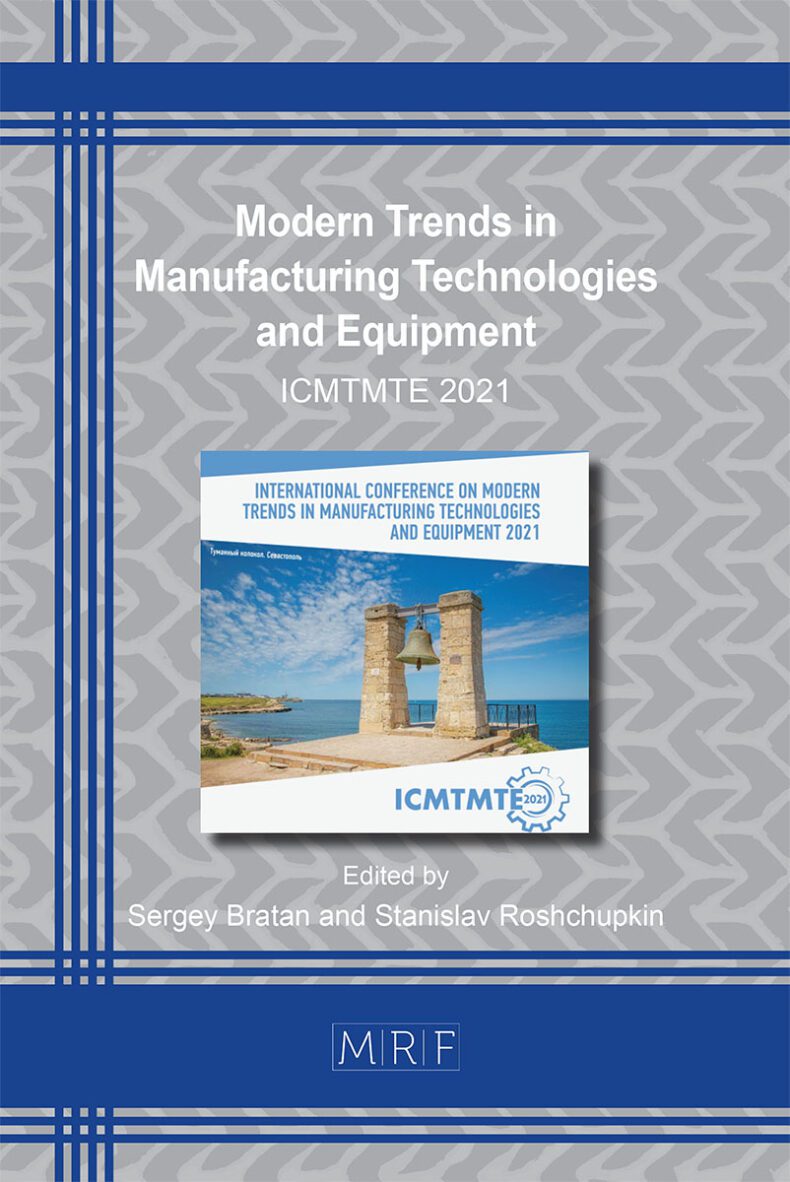Effect of Heat Treatment on Structural and Mechanical Properties of Alloyed Fused Alumina
Yu. Bagaiskov, N. Ushakov
download PDFAbstract. Heat treatment of ceramic-bond grinding tools during manufacture takes place at temperature of abrasive grains up to 1250 °C, which results in variation of their phase composition, structure, and strength. Similar phenomena may take place during grinding caused by the occurring high-temperature processes. It primarily pertains to alloyed fused alumina. X-ray and topography testing, as well as studying of micromechanical properties made it clear that structural performance, material strength, and fracture pattern of single grains of Ti-containing fused alumina affected by temperature depend on the type and ratio of alloy additives in alumina and on the decomposition level of the Ti2O3 solid solution. In terms of aggregate properties, purple varieties of Cr-Ti fused alumina featuring the minimum TiO2/Cr2O3 ratio of 1.5 in the solid solution after heat treatment are preferable.
Keywords
Fused Alumina, Alloying, Heat Treatment, Structure, Strength
Published online 1/5/2022, 5 pages
Copyright © 2022 by the author(s)
Published under license by Materials Research Forum LLC., Millersville PA, USA
Citation: Yu. Bagaiskov, N. Ushakov, Effect of Heat Treatment on Structural and Mechanical Properties of Alloyed Fused Alumina, Materials Research Proceedings, Vol. 21, pp 71-75, 2022
DOI: https://doi.org/10.21741/9781644901755-13
The article was published as article 13 of the book Modern Trends in Manufacturing Technologies and Equipment
![]() Content from this work may be used under the terms of the Creative Commons Attribution 3.0 licence. Any further distribution of this work must maintain attribution to the author(s) and the title of the work, journal citation and DOI.
Content from this work may be used under the terms of the Creative Commons Attribution 3.0 licence. Any further distribution of this work must maintain attribution to the author(s) and the title of the work, journal citation and DOI.
References
[1] A. Garshin, S. Fedotova, Abrasive Materials and Tools. Manufacturing Procedure: Instructional, Aid, SPb.: Polytechnic University Press, 2008.
[2] V. Ostrovsky, Theoretical Basis of Grinding, Leningrad: Leningrad State University Press,1981.
[3] I. Lavrov, I. Rivlin and T. Nikitina, Physical and Chemical Studies of Abrasive Materials and Tools, Collected Papers, L.: VNIIASh, 1981, pp 69 — 75.
[4] O. Pushkarev, V. Schumyacher, Methods and Equipment for Monitoring of Abrasive Materials’ Physical and Mechanical Characteristics: Monograph, Volgograd: VolgGASU, 2004.
[5] E. Gevorkyan, Super Hard Materials. 5 (2004) 54-57.
[6] A. Ovchinnikov, Materials for Abrasive Tools. Review Science and Education, 7, 2013. https://doi.org/10.7463/0713.0577449
[7] V. Berdikov, A. Diulin, V. Efimchuk, O. Pushkarev and G. Finogenov, Device for Studying Durability of Materials, Plant Laboratory. 7 (1986) 78 – 81
[8] O. Pushkarev, Yu. Bagaiskov, Investigation of micromechanical properties of fused alumina and silicone carbide grains, Journal of Physics: Conference Series. 2020. – Vol. 1515 : International Scientific Conf. «Metrological Support of Innovative Technologies – ICMSIT-2020» (Krasnoyarsk, Russia, 4 March, 2020). https://doi.org/10.1088/1742-6596/1515/5/052016
[9] O. Pushkarev, O. Kulik and L. Nikuiko, Plant Laboratory. Material Diagnostics. 83 (2017) 49-52.
[10] O. Pushkarev, Yu. Bagaiskov, Refinement of the procedure to determine durability of abrasive materials, IOP Conference Series: Materials Science and Engineering. Vol. 862 : II International Conference «MIP: Engineering-2020: Modernization, Innovations, Progress: Advanced Technologies in Material Science, Mechanical and Automation Engineering» (Krasnoyarsk, Russia, 16-18 April, 2020). https://doi.org/10.1088/1757-899X/862/3/032019































